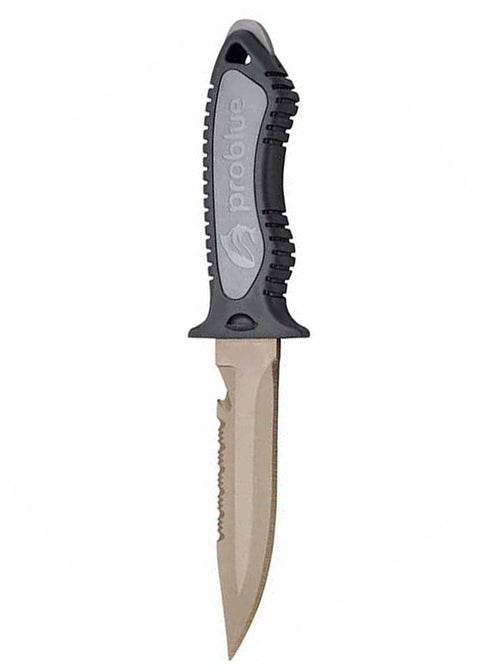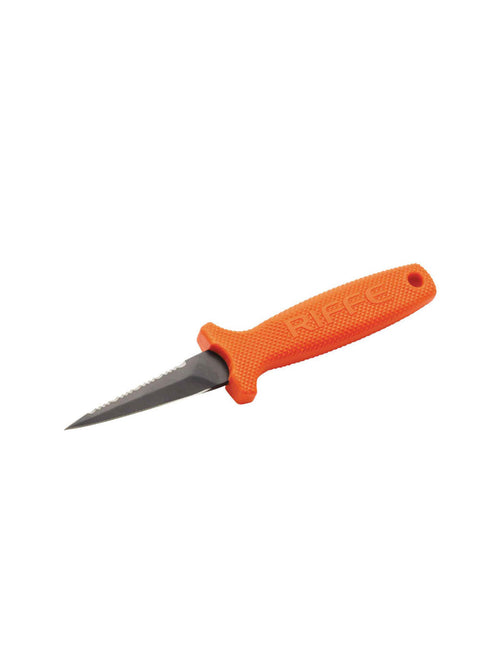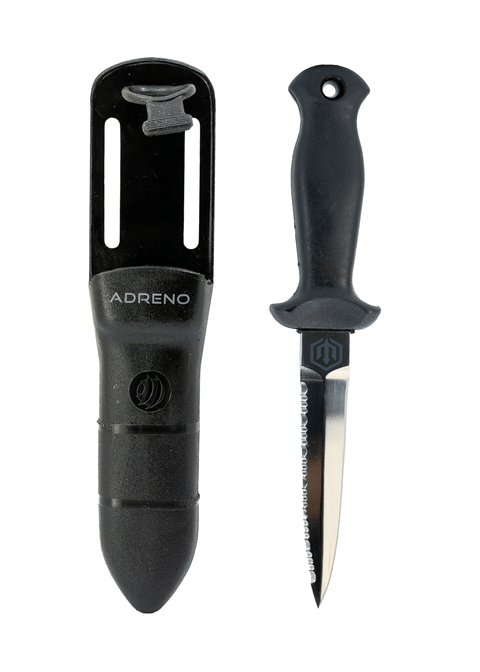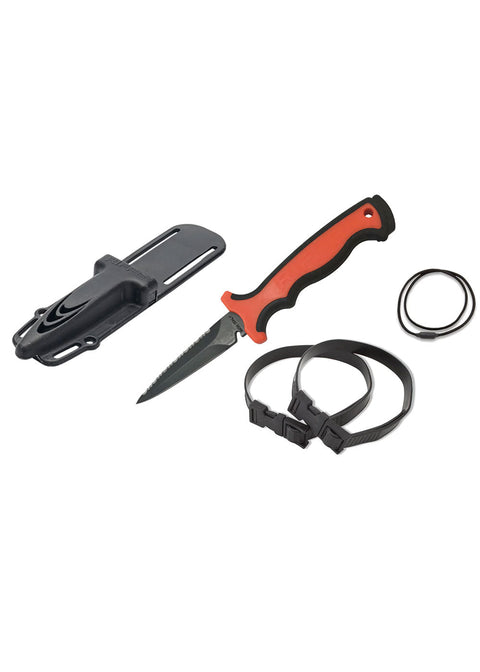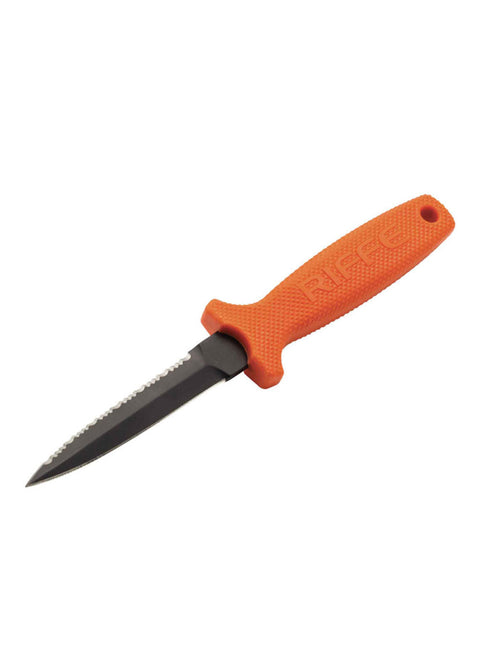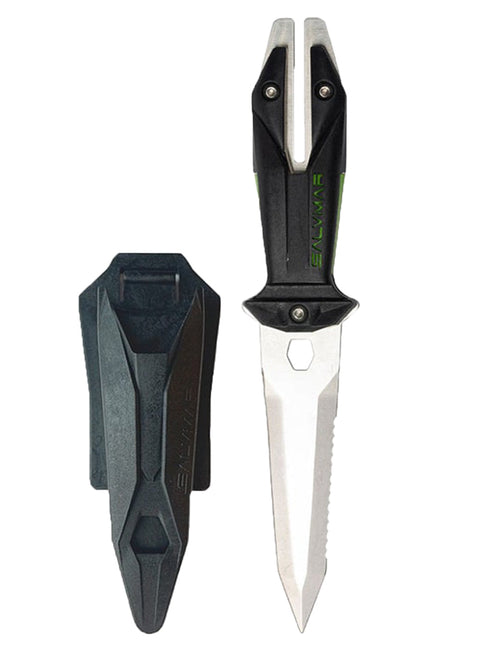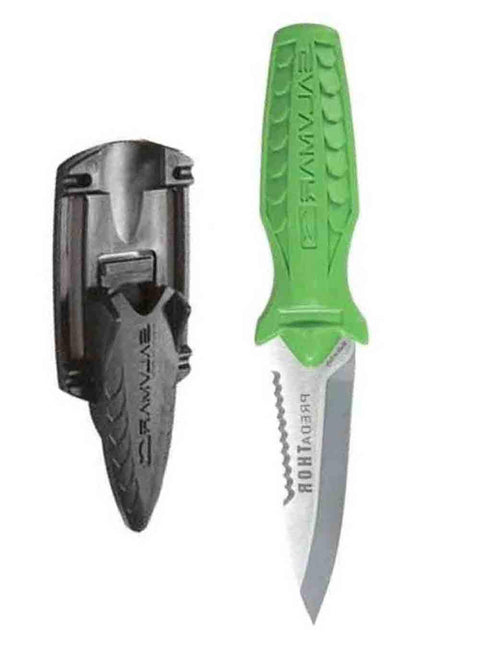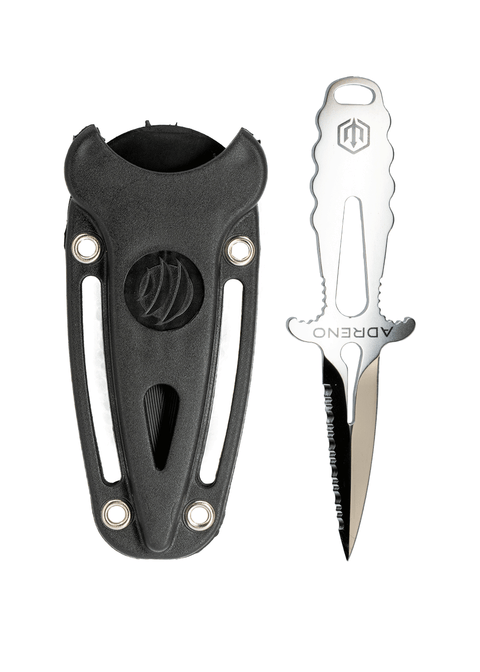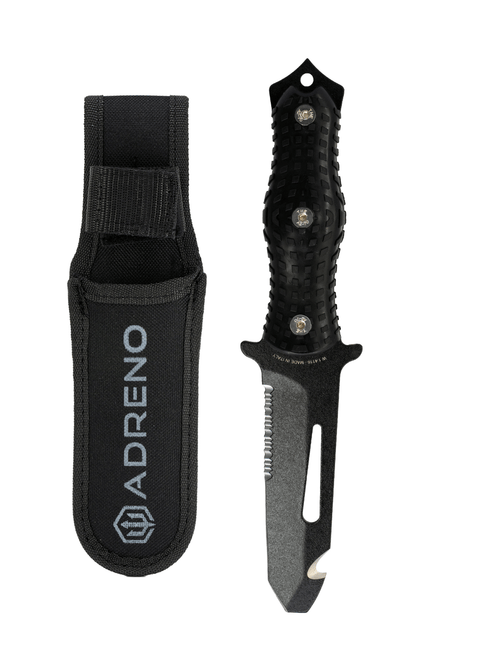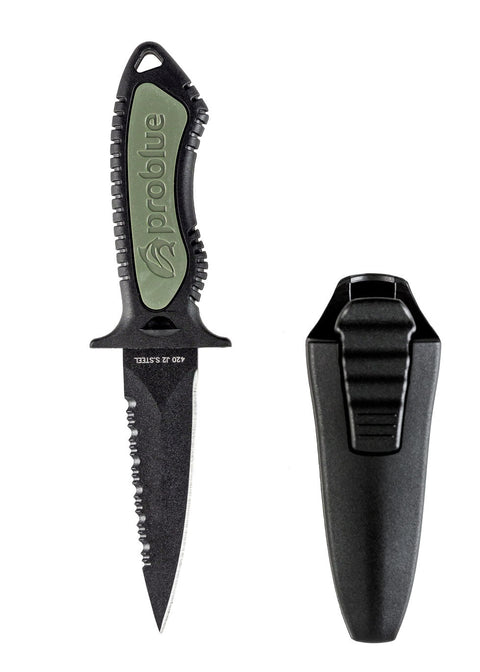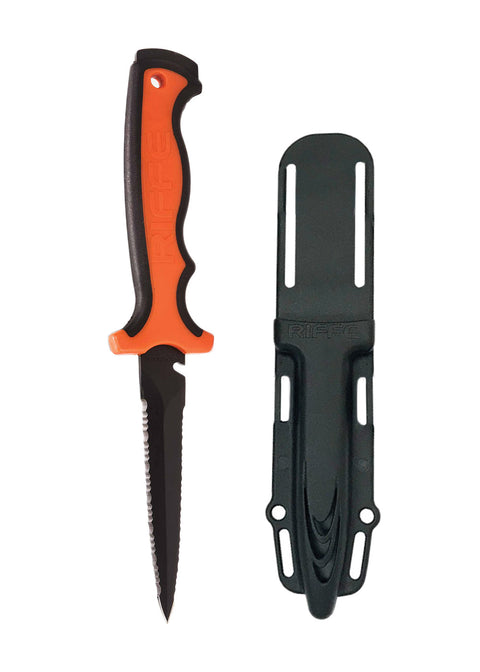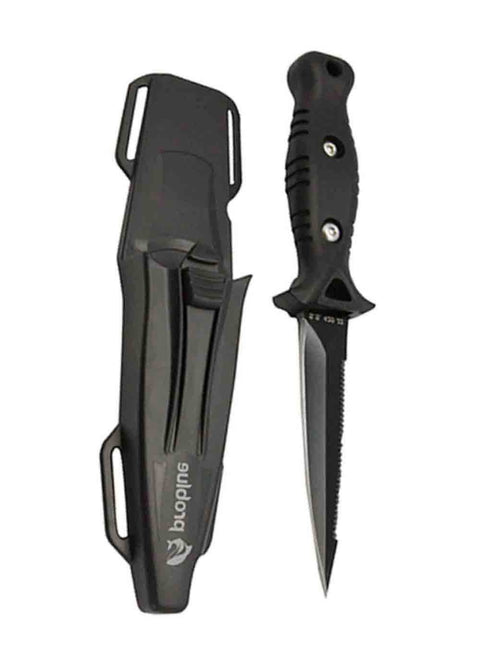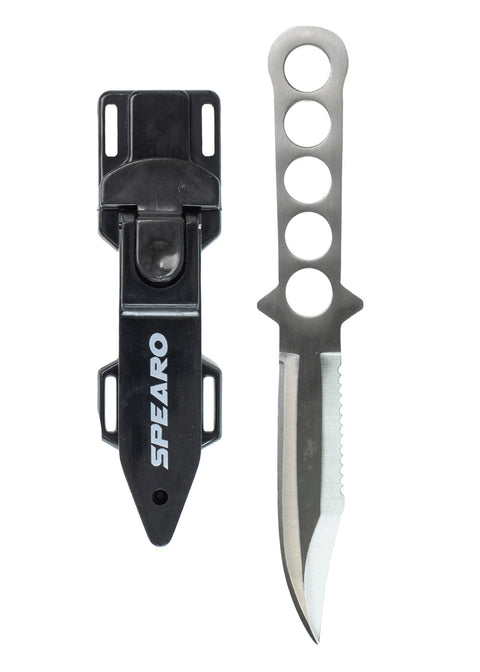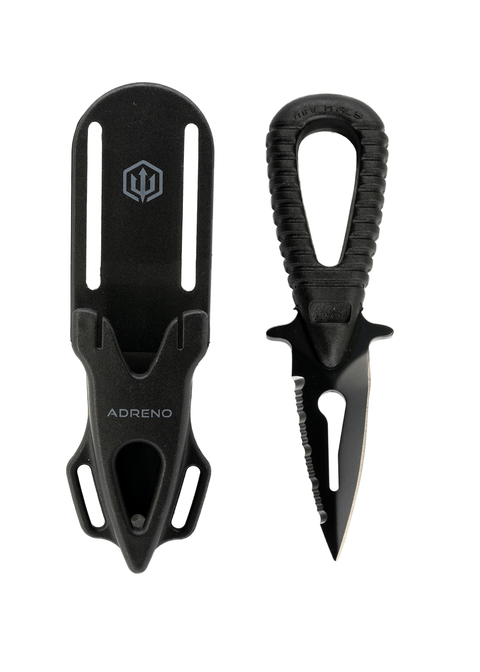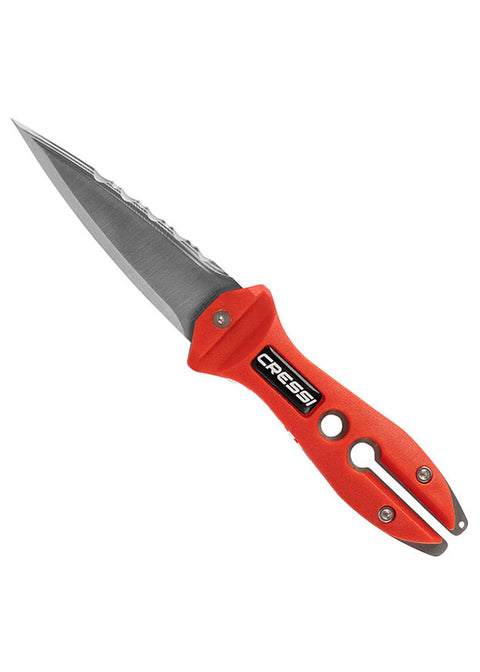Spearfishing Knives
A diving knife is arguably one of the most crucial elements of your spear kit. Spearfishing diving knives often come as a dagger, with a pointed tip to spike your fish.
There are a plethora of different designs but typically your blade edges will include a smooth edge and potentially a serrated edge for... Read More

Spearfishing Knives
A diving knife is arguably one of the most crucial elements of your spear kit. Spearfishing diving knives often come as a dagger, with a pointed tip to spike your fish.
There are a plethora of different designs but typically your blade edges will include a smooth edge and potentially a serrated edge for cutting through rope and line.Some blades will come with a hole (or holes) to help straighten spear shafts on the go if they're bent, or even a specific line cutting section. This means your dive knife acts as both a tool and as a crucial safety accessory. No spearo should be entering the water without at least one dive knife handy. Remember, losing your dive knife isn't uncommon, so having a spare handy is important.
It is also important to consider how the dive knife is strapped and how it can be taken out for use. Many people opt to have their knife on their belt for easy access, others run it around there leg but this can be harder to reach, especially if you're tangled. How securely your knife is stored and how easy it is to take out will depend on the style of sheath, so make sure you take this into consideration when looking for your next knife.
BC knives are intended for scuba diving applications, with specialised features to keep you safe while submerged. Many BCD knives are typically stumpier than a dive knife you would use spearfishing, with features such as a blunt tip and line cutter. Scuba divers don't require a pointed tip for dispatching fish, instead, BC knives will have specialised edges and generally come with a BC mounting system. This means your knife attaches to your BCD instead of yourself.


